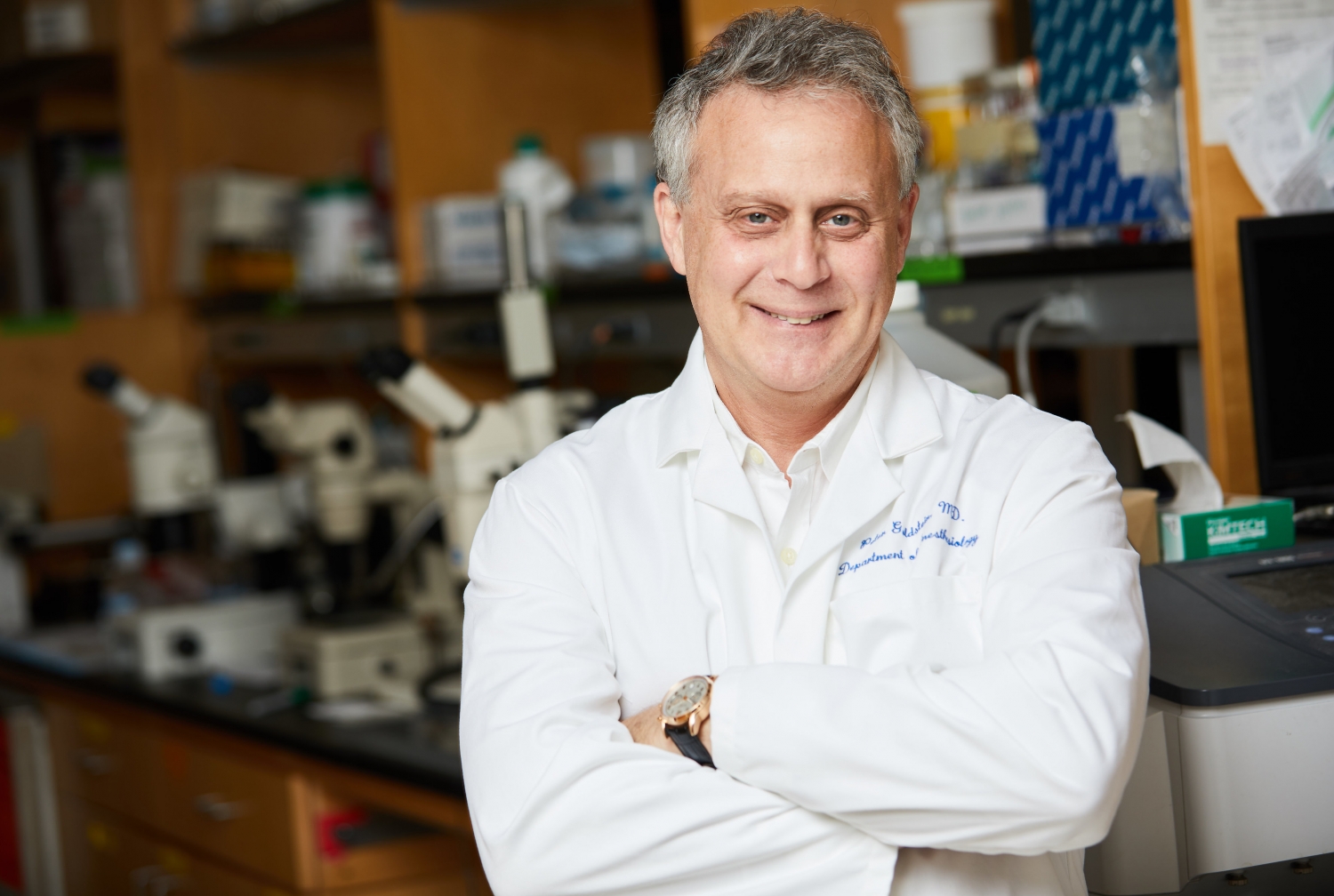Dr. Peter Goldstein, a professor of anesthesiology at Weill Cornell Medicine, has been awarded a grant from the National Institutes of Health (NIH) for a project to develop a non-opioid, non-addicting medicine for a hard-to-treat form of pain called neuropathic pain.
The two-year, $1,757,406 grant was awarded under the NIH’s Helping to End Addiction Long-term Initiative, or NIH HEAL Initiative, which aims to improve treatments for chronic pain, curb the rates of opioid use disorder and overdose and achieve long-term recovery from opioid addiction.
The lack of good alternatives to addictive opioid painkillers, especially for chronic forms of pain such as neuropathic pain, which arises from damage to—and a resulting hypersensitivity or hyperactivity of—the neurons or nerve fibers that normally transmit pain signals to the brain, has long been seen as a contributing factor to the crisis. The NIH estimates that more than 10 million Americans aged 12 years or older misused opioids in 2018. Opioids also account for most of America’s drug overdose deaths, which totaled about 70,000 in 2017.
Dr. Goldstein and his colleagues are developing a candidate therapy that targets an ion channel protein—not an opioid receptor—on pain-transmitting nerve cells; overactivity of the ion channel has been linked to neuropathic pain. The strategy may serve as the basis for a new and powerful but non-addictive class of painkillers. This work derives from a major commitment by the Department of Anesthesiology at Weill Cornell Medicine to develop new treatments for pain.
“We’re thrilled to have received this highly competitive, peer-reviewed award from NIH,” Dr. Goldstein said. “Such support validates our approach to finding a better therapy for peripheral neuropathic pain; if we’re successful we could fundamentally alter the management of a medical problem for which current treatments are insufficient.”
“It’s clear that a multi-pronged scientific approach is needed to reduce the risks of opioids, accelerate development of effective non-opioid therapies for pain and provide more flexible and effective options for treating addiction to opioids,” said NIH Director Dr. Francis S. Collins, who launched the initiative in early 2018. “This unprecedented investment in the NIH HEAL Initiative demonstrates the commitment to reversing this devastating crisis.”
Surveys indicate that roughly 10 percent of adult Americans, or more than 20 million individuals, suffer from probable neuropathic pain.
There are two broad types of neuropathic pain: central, which arises from damage to neurons or nerve fibers in the brain and spinal cord; and peripheral, which arises from neuron or nerve fiber damage elsewhere in the body. Common causes of damage that brings on peripheral neuropathic pain include tumors, wounds, inflammation, toxic chemicals including chemotherapy, and chronic high blood sugar in diabetes.
Dr. Goldstein and his colleagues—which include Dr. Gareth Tibbs, a senior research associate in anesthesiology at Weill Cornell Medicine; Dr. Dianna Willis, associate director of the Burke Neurological Institute and assistant professor of neuroscience in the Feil Family Brain and Mind Research Institute; and Dr. J. David Warren, an associate professor of research in biochemistry at Weill Cornell Medicine—are developing a candidate therapy for peripheral neuropathic pain based on a molecule that belongs to the alkylphenol family of compounds. The molecule selectively blocks an ion channel protein called HCN1, which normally helps drive the activity of peripheral pain neurons and can become overactive in peripheral neuropathic pain. An early version of the HCN1-blocking molecule has shown promise in tests in an animal model of this form of pain.
The scientists are developing a small molecule version of their candidate drug, suitable for oral delivery, but plan also to develop an injectable version that is attached to a large antibody molecule.
“The large-molecule version of this candidate therapy should target more selectively the nerves that are the sources of peripheral neuropathic pain, and should also stay out of the brain, thus avoiding off-target effects on HCN1 channels there,” Dr. Goldstein said.
Dr. Goldstein initially received funding to develop the candidate therapy from Weill Cornell Medicine’s Department of Anesthesiology and the Daedalus Fund for Innovation, which aims to accelerate the path of new discoveries to the market by providing a bridge to commercial investment. In 2018, Weill Cornell Medicine licensed the discovery to Akelos Inc., a start-up biopharmaceutical company that, with the support of the institution’s Office of BioPharma Alliances and Research Collaborations, was established with the express purpose to further develop and commercialize the candidate therapy.
Drs. Goldstein, Tibbs, Willis and Warren are all Akelos Inc. Scientific Advisory Board members. Dr. Goldstein is a named inventor on patents licensed to Akelos Inc. and Cornell University. Drs. Goldstein, Tibbs and Warren are equity stakeholders in Akelos Inc.

